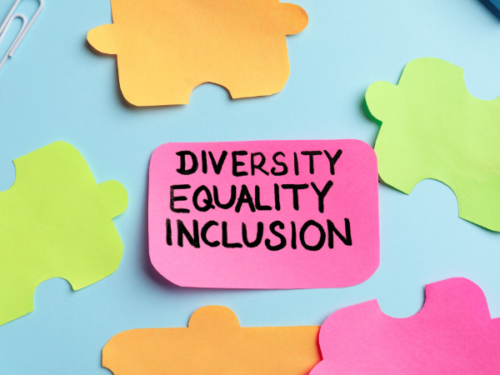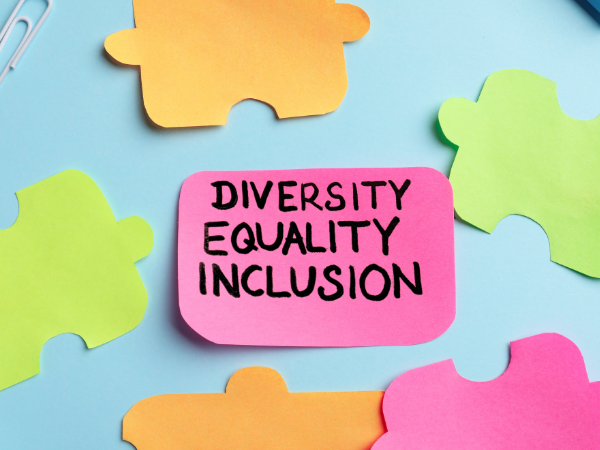
How to Create a Diversity and Inclusion Policy
How to Create a Diversity and Inclusion Policy
Having a strong Diversity and Inclusion (D&I) policy is crucial in today’s diverse workplace. It is essential for a successful business strategy, not just a temporary fad. Employers are recognising that fostering an inclusive environment is essential for attracting and retaining top talent, driving innovation, and ensuring long-term success. This guide will walk you through the best practices for creating a comprehensive D&I policy, tailored to the needs of modern workplaces.

Why Diversity and Inclusion Matter
Before diving into the creation of a D&I policy, it’s important to understand why diversity and inclusion are essential in the workplace. A diverse workforce brings together varied perspectives, experiences, and ideas, which can lead to more innovative solutions and better decision-making. Moreover, inclusion ensures that all employees feel comfortable, valued, respected, and able to contribute fully to the organisation’s success.
Diversity in Tech is particularly critical, as the tech industry has historically faced challenges in achieving a balanced representation of different genders, ethnicities, and backgrounds, resulting in a digital skills gap. By implementing strong diversity initiatives, tech companies can tap into a broader talent pool, enhance creativity, and improve overall business outcomes.
Step 1: Assess Your Current Situation
Before creating a new D&I policy, it’s essential to assess the current state of diversity and inclusion within your organisation. This can be done through:
- Employee Surveys: Gather feedback on employees’ experiences with diversity and inclusion within the workplace.
- Data Analysis: Examine demographic data related to hiring, promotions, and retention to identify potential gaps or disparities.
- Culture Audits: Conduct focus groups or interviews to understand the company culture and areas where it may be excluding certain groups.
Understanding where your organisation stands will help you set realistic goals and tailor your policy to address specific challenges.
Step 2: Define Clear Goals and Objectives
Once you have a clear understanding of your current D&I landscape, the next step is to set measurable goals and objectives. These should align with your overall business strategy and be specific, measurable, achievable, relevant, and time-bound (SMART).
For example, you might set goals to:
- Increase the representation of underrepresented groups in leadership roles by 20% within two years.
- Ensure that all employees undergo D&I training within the first six months of employment.
- Improve employee satisfaction scores related to diversity and inclusion by 15% over the next year.
These goals should be communicated clearly throughout the organisation, and progress should be regularly monitored and reported.
Step 3: Develop and Implement the Policy
With your goals in place, it’s time to develop the actual D&I policy. Here’s how to structure it:
3.1. Introduction and Purpose
Begin with a statement that outlines the importance of diversity and inclusion to your organisation’s mission and values. This section should emphasise the business case for D&I and express a commitment to fostering an inclusive workplace.
3.2. Scope and Applicability
Clearly define who the policy applies to, typically all employees, including full-time, part-time, and contract workers. It should also apply to all levels of the organisation, from entry-level positions to executive leadership.
3.3. Core Principles
Outline the core principles that will guide your D&I efforts. These might include:
- Equal Opportunity: Commitment to providing equal opportunities regardless of race, gender, sexual orientation, disability, or any other characteristic.
- Inclusive Culture: Promoting a workplace where all voices are heard and respected.
- Zero Tolerance for Discrimination: Clearly state that discrimination or harassment of any kind will not be tolerated.
3.4. Responsibilities
Assign responsibilities for implementing and maintaining the D&I policy. This might include:
- HR Department: Overseeing the implementation of the policy and ensuring compliance.
- Senior Leadership Team: Championing diversity initiatives and leading by example.
- All Employees: Upholding the values of the policy in their daily work.
3.5. Actionable Steps
Detail the specific action plan your organisation will take to achieve its D&I goals. This could include:
- Recruitment Strategies: Implementing blind recruitment processes to reduce bias and increase diversity.
- Training and Development: Providing regular D&I training sessions for all employees.
- Employee Resource Groups (ERGs): Supporting the formation of ERGs to foster community and provide support for underrepresented groups. For example, a group for gender equality, one for working parents, LGBTQ+ employees, etc.
3.6. Monitoring and Reporting
Explain how the policy’s effectiveness will be monitored and reported. This should include:
- Regular Reviews: Conducting periodic reviews of the policy to ensure it remains relevant and effective.
- Feedback Mechanisms: Providing channels for employees to give feedback on the policy and suggest improvements.
- Transparency: Committing to publicly reporting on progress towards D&I goals.
Step 4: Engage and Educate Your Workforce
For a D&I policy to be effective, it must be embraced by the entire organisation. This requires ongoing engagement and education:
- Training: Offer mandatory D&I training to educate employees on the importance of diversity and how to contribute to an inclusive environment.
- Communication: Keep the lines of communication open, regularly sharing updates on D&I initiatives and progress towards goals.
- Leadership Involvement: Encourage leaders to actively participate in D&I efforts, setting the tone for the rest of the organisation.
Step 5: Regularly Review and Update the Policy
Diversity and inclusion are not static goals; they require ongoing attention and adaptation. Regularly review and update your D&I policy to reflect changing demographics, societal shifts, and business needs. This could involve:
- Annual Audits: Conducting yearly audits to assess the effectiveness of your D&I efforts and identify areas for improvement.
- Employee Feedback: Continuously seeking input from employees to ensure the policy meets their needs and expectations.
- Benchmarking: Comparing your D&I initiatives with industry standards to stay competitive and innovative.
Creating a robust diversity and inclusion policy is a critical step for employers looking to foster a more equitable and innovative workplace. By following these best practices, you can develop a D&I policy that not only meets the needs of your employees but also drives your organisation toward greater success.
Remember, diversity initiatives and employer diversity and inclusion strategies are ongoing processes that require commitment and continuous improvement. By prioritising diversity and inclusion in the workplace, you’re not just complying with industry standards—you’re building a stronger, more inclusive future for your organisation.
